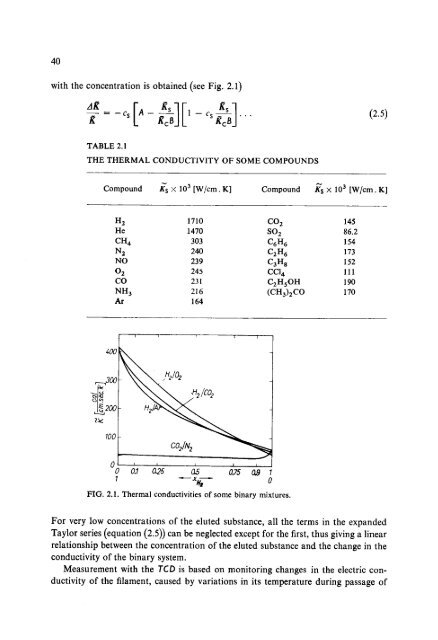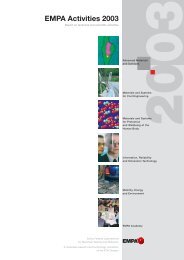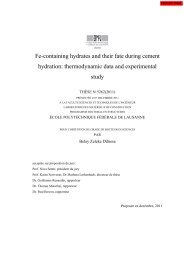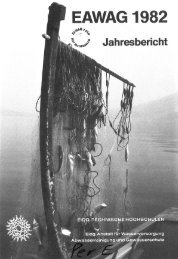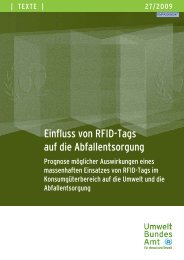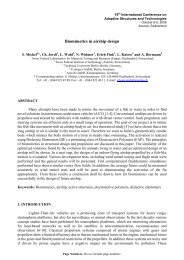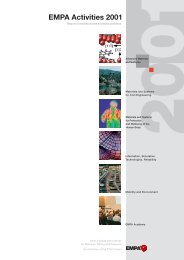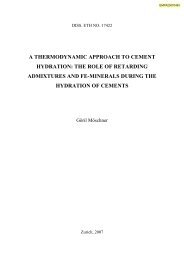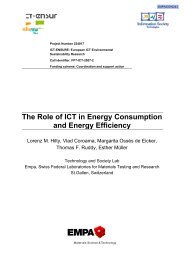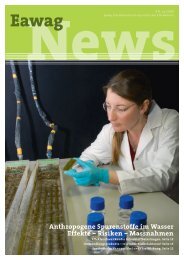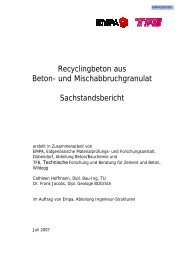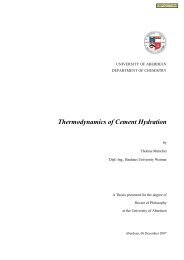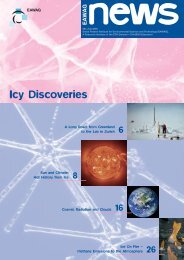2. The Thermal Conductivity Detector (TCD) - Eawag-Empa Library
2. The Thermal Conductivity Detector (TCD) - Eawag-Empa Library
2. The Thermal Conductivity Detector (TCD) - Eawag-Empa Library
You also want an ePaper? Increase the reach of your titles
YUMPU automatically turns print PDFs into web optimized ePapers that Google loves.
40<br />
with the concentration is obtained (see Fig. <strong>2.</strong>1)<br />
TABLE <strong>2.</strong>1<br />
THE THERMAL CONDUCTIVITY OF SOME COMPOUNDS<br />
w N<br />
Compound KS x lo3 [W/cm. K] Compound KS x lo3 [W/cm. K]<br />
1710<br />
1470<br />
303<br />
240<br />
239<br />
24s<br />
23 I<br />
216<br />
164<br />
7 0<br />
FIG. <strong>2.</strong>1. <strong>The</strong>rmal conductivities of some binary mixtures.<br />
145<br />
86.2<br />
154<br />
173<br />
152<br />
111<br />
190<br />
170<br />
For very low concentrations of the eluted substance, all the terms in the expanded<br />
Taylor series (equation (<strong>2.</strong>5)) can be neglected except for the first, thus giving a linear<br />
relationship between the concentration of the eluted substance and the change in the<br />
conductivity of the binary system.<br />
Measurement with the <strong>TCD</strong> is based on monitoring changes in the electric con-<br />
ductivity of the filament, caused by variations in its temperature during passage of


